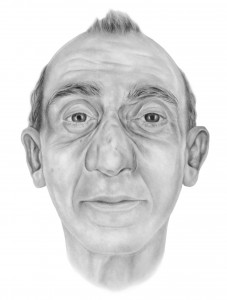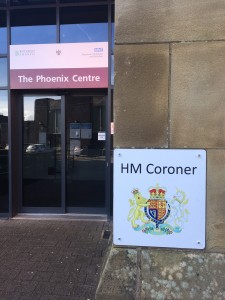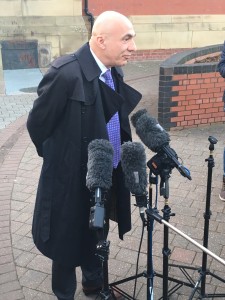THE REASONS why David Lytton travelled to Saddleworth are likely to have died with the complex London-born pensioner described as a “genius”, “loner”, and a “man not of this century.”

Manchester North coroner Simon Nelson recorded an open conclusion into the death of Mr Lytton – born David Lautenberg – who was found dead on Chew Track above Dovestone Reservoir, Greenfield in December 2015.
Mr Nelson confirmed the medical cause of death was due to ‘Neil Dovestone’ – as Mr Lytton was known before his positive identification – ingesting an excessive amount of strychnine poison.
Forensic toxicologist, Julie Evans, told the inquest at Heywood 2.1mg of strychnine per one litre of blood was found in the deceased’s body. She said 16mg was equivalent to “a few crystals of sugar”.
Summing up Mr Nelson said: “There is no evidence before me to suggest any third party involvement or any criminally suspicious circumstances whatsoever arising from the death of Mr Lytton.
“But it has been impossible to say whether Mr Lytton’s death came about misadvertently or accidentally. And suicide can and must never be presumed.
“Accepting he died of his own hand, I can’t be sure of My Lytton’s prevailing intention from the moment he embarked on his fateful journey. The only appropriate conclusion I can reach is an open conclusion.
“This has been an extraordinary case for obvious reasons. He was a highly intelligent individual who I have no doubt would have been bemused by the attention both locally and further afield generated by his death.
“ But there are many fundamental questions which remain unanswered. Why Dovestone? What was the connection, if any?
But there are many fundamental questions which remain unanswered. Why Dovestone? What was the connection, if any?
“What was Mr Lytton’s history in relation to the use of strychnine? Had he previously been prescribed or used that drug for therapeutic, medicinal or stimulant purposes?
“What was his prevailing intention immediately before ingesting strychnine which sadly proved fatal?
“Why did he not carry any form of ID? Why did he purchase a return ticket (from London Euston to Manchester Piccadilly) valid until January 10, 2016?
“From where and from whom did he receive the strychnine? When and who put the strychnine in the thyroxine sodium bottle?”
The court also heard Mr Lytton had booked a five-night stay at a Travelodge on Uxbridge Road, Ealing after arriving at London Heathrow from Pakistan the day before he was last seen alive on December 11, 2015.
An empty bottle was found on the dead body together with £130 in ten pound notes and three railway tickets. Traces of strychnine were found in the bottle.

Mr Lytton, who studied psychology and sociology at Leeds University from 1966 to 1970, had used thyroxine sodium to combat an underactive thyroid complaint.
Mr Lytton’s younger brother, Jeremy Lawton, gave evidence during the near four-hour inquest.
He confirmed his brother had no link with Dovestone or the Oldham area. Mr Lawton also insisted Mr Lytton would never have contemplated suicide.
“He never self harmed,” said Mr Lawton. “He had no suicidal tendencies. He always taught me to look ahead.
“He was a great believer in serendipity and that tomorrow might not be as bad as today.
“Nothing to me points to him wanting to commit suicide. Strychnine is widely available in Pakistan. He could just go to a chemist and neck it.
“I can’t imagine any situation which would have pushed David over the edge into wanting to commit suicide.
“Why would he want to come back here and do all this. I actually thought he might be dead somewhere else,” added Mr Lawton who told the court the siblings hadn’t spoken for more than 10 years.
“To find out he had been alive as early as a year ago was a big shock. It was a shock to everyone who knew him.”


